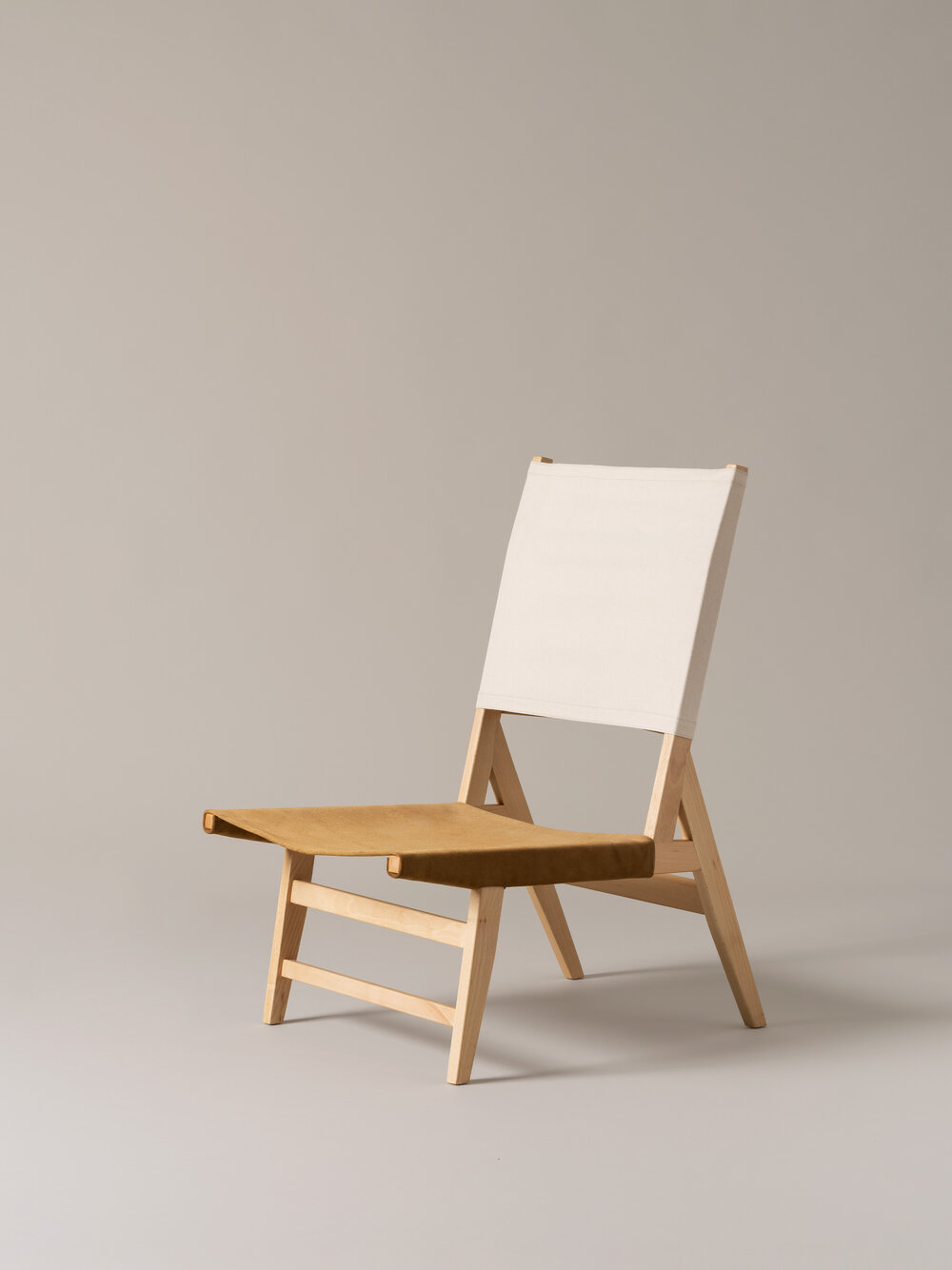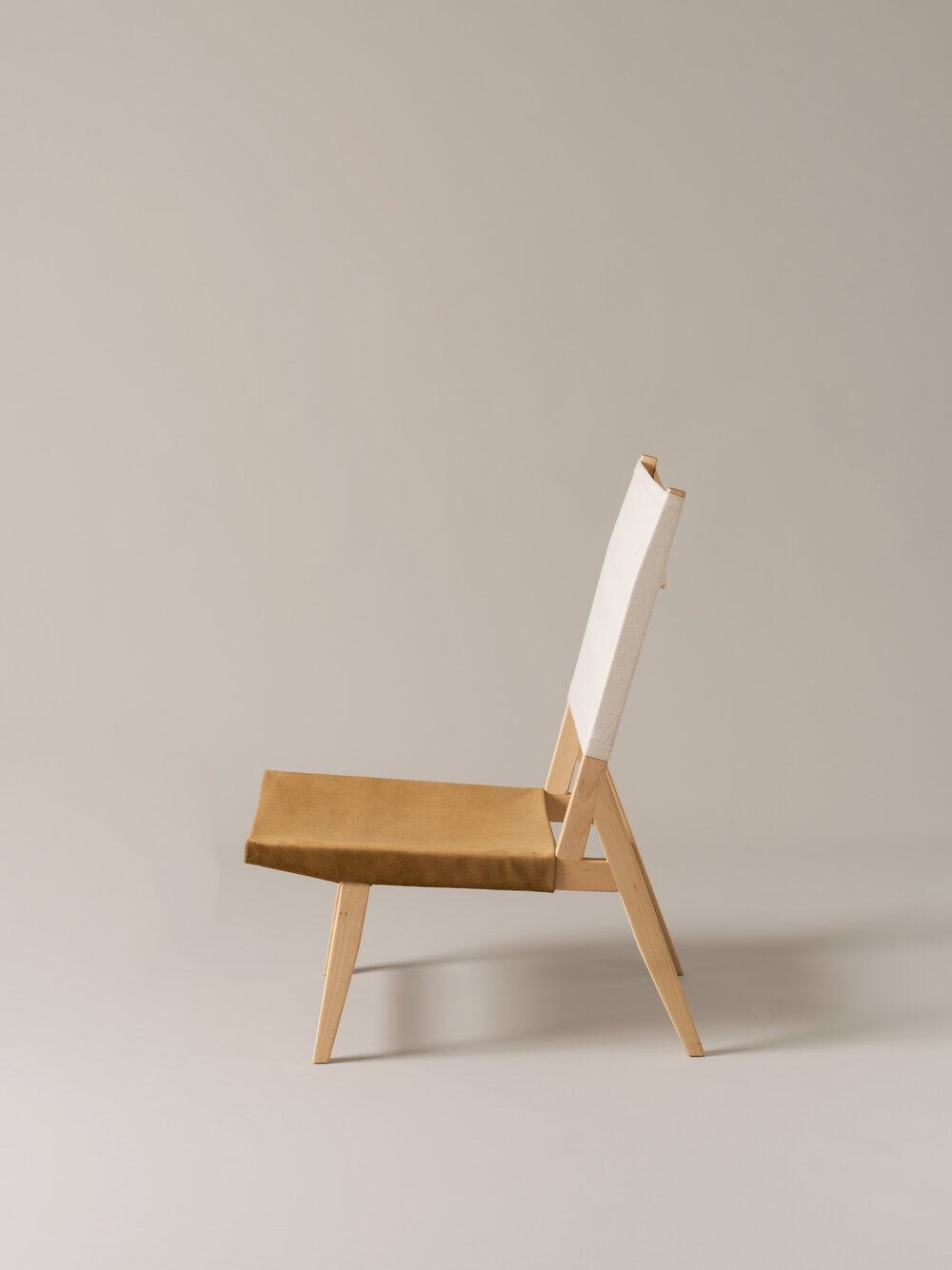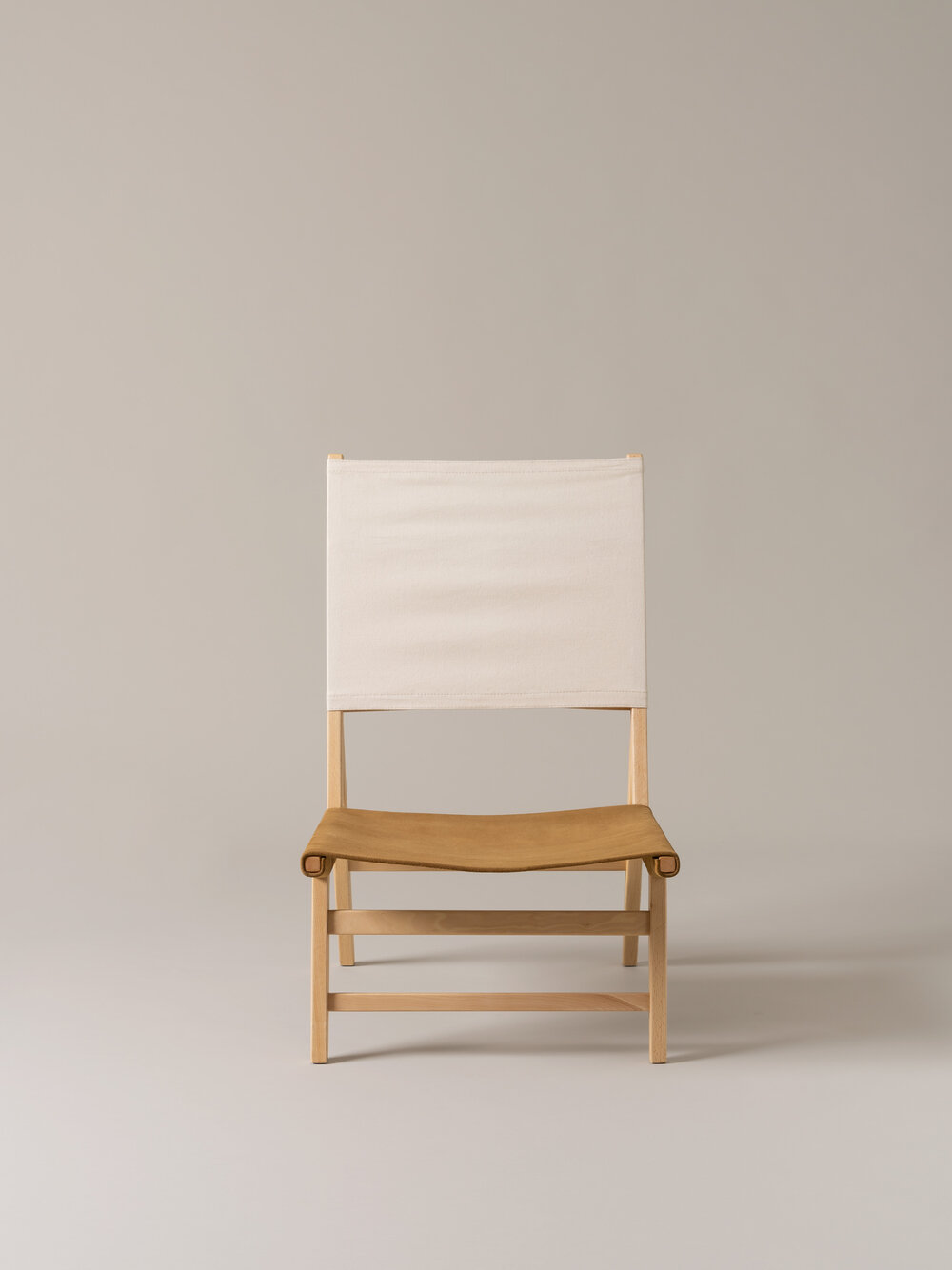Silla Barceloneta
Designed by Federico Correa & Alfonso Milá

Text by AMOO Studio
While the Spanish word tumbona or hamaca is used to describe a low, comfortable seat designed for resting, the Catalan term gandula is somewhat more accurate and descriptive. A gandul is someone who indulges in laziness, someone reluctant to work. Through this freeing of oneself, Federico Correa and Alfonso Milá reinterpreted the fishermen’s and villagers’ chairs, which, in the former Mediterranean towns, would be taken out into the streets during sunset, enjoying the breeze and chatting with whoever passed by.

Federico Correa seated on a Barceloneta chair in Casa Villavecchia. © Fons Fotogràfic Correa Milá, arquitectes - Arxiu Històric del Col·legi d’Arquitectes de Catalunya
Cord-tensioned fabrics and meticulous woodwork evoke the craft of mestres d’aixa, the art of handcrafting boats from wood. Offering a popular approach complemented with humour and culture, both always found in the duo’s career, Barceloneta ironically echoes the Barcelona armchair, designed in 1929 by Ludwig Mies van der Rohe and Lilly Reich for the German Pavilion as part of the Barcelona International Exposition; an armchair based on the Roman senators' seats and made of leather and stainless steel. Senators and fishermen, or fishermen sitting as senators. In the Barceloneta chair, an emblem of Catalan design in the second half of the 20th century, Correa & Milá combined intelligence, effortlessness and an idea of comfort and elegance always understood from a local perspective. A culture learned in the studio of José Antonio Coderch and Manuel Valls, who they joined in 1952 as students, two years before the creation of the chair.
In 1954, José Antonio Coderch was about to finish one of his most important buildings, and one of the most iconic in Spanish post-war architecture: the Casa de la Marina, a public housing project commissioned by the Instituto Social de la Marina in the popular fishermen's neighbourhood of Barceloneta. The architectural language employed by Coderch, heavily influenced by his Italian contemporaries, proposed a revisionism of orthodox European modernity, adapting it to the local construction traditions and industries, still underdeveloped at the time. It was with this same spirit that Correa & Milá, working in the studio of Coderch and Valls, tackled the interiors of the show flat of Casa de la Marina, for which they designed the emblematic Barceloneta chair. In Coderch's words, "We need architects (...) who work with a rope tied to their feet, so they cannot stray too far from the ground they are rooted in, and from the people they know best, to ensure they always stand on a firm foundation of dedication, goodwill and honesty". It is safe to say, as Coderch’s disciples, this is the fundamental principle behind the design of the Barceloneta chair.
In Francesc Català-Roca's historic photographs depicting the show flat of Casa de la Marina, the Barceloneta chairs share the scene with folk and industrial ceramic elements, images of Romanesque art, the fishermen’s industrial luminaires, and other elements verging between the popular and the modern. Also other seats like the Llambí chairs, designed by Coderch years earlier and exhibited in the Spanish pavilion at the 9th Milan Triennale in 1951. It was Talleres Llambí who produced all the wooden elements of Casa de la Marina, and Correa & Milá used their expertise to shape the exquisite joinery and assemblage in the wooden structure of the Barceloneta chair. Years later, in the 11th Milan Triennale in 1957, it was precisely the latter that was exhibited in the Spanish pavilion in recognition of their work, a recognition that was not always forthcoming – at least not among those for whom the chair was intended. When the show flat exhibition concluded, the furniture was put up for auction among the humble future tenants the building had been conceived for: the fishermen. Yet, the auction was a flop, and nobody bought the furniture due to its radical modern twist on the neighbourhood's traditional heritage.

Casa de la Marina - Francesc Català-Roca. © Fons Fotogràfic F. Català-Roca – Arxiu Històric del Col·legi d’Arquitectes de Catalunya

Casa de la Marina - Francesc Català-Roca. © Fons Fotogràfic F. Català-Roca – Arxiu Històric del Col·legi d’Arquitectes de Catalunya

Inside Coderch-Milá house, Cadaqués 1958. Pierre Berdoy © Fons Fotogràfic Correa Milá, arquitectes - Arxiu Històric del Col·legi d’Arquitectes de Catalunya
Still, as usual, there’s a time and place for everything, and the Barceloneta chair, decontextualised from its origin, is now reedited by Santa & Cole. A design which, 70 years later, still maintains its validity and timelessness. Because as Federico Correa said: “What is new can be either good or bad. What is good will always be new.”

Federico Correa seated on a Barceloneta chair in Casa Villavecchia. © Fons Fotogràfic Correa Milá, arquitectes - Arxiu Històric del Col·legi d’Arquitectes de Catalunya
AMOO is born from the collaboration between architects Aureli Mora and Omar Ornaque. Combining architecture, interior architecture, product design and heritage dissemination, the studio constantly intertwines these disciplines. One of their varied projects includes curating the exhibition Correa & Milá, en perspectiva at the COAC (Architects' Association of Catalonia), held in 2023.



